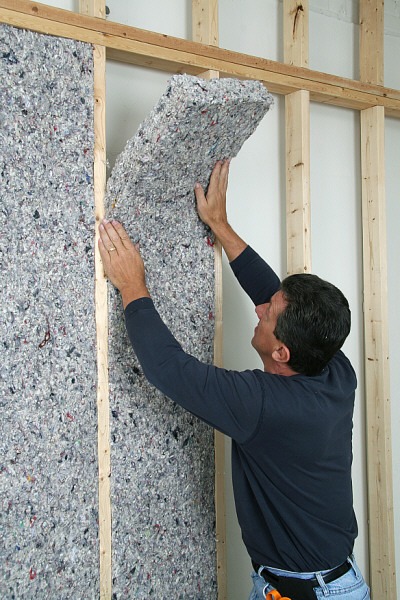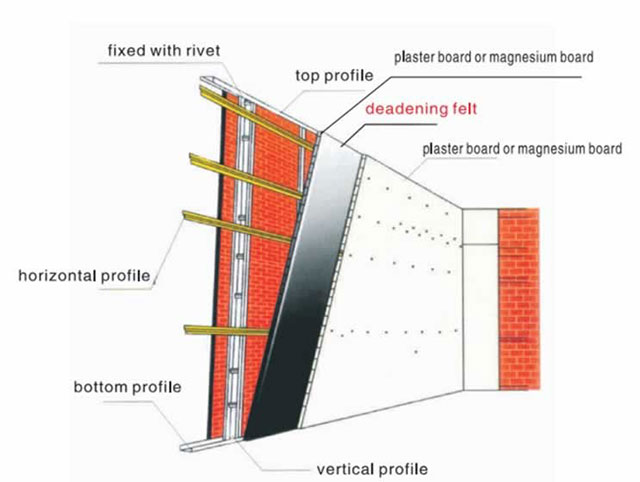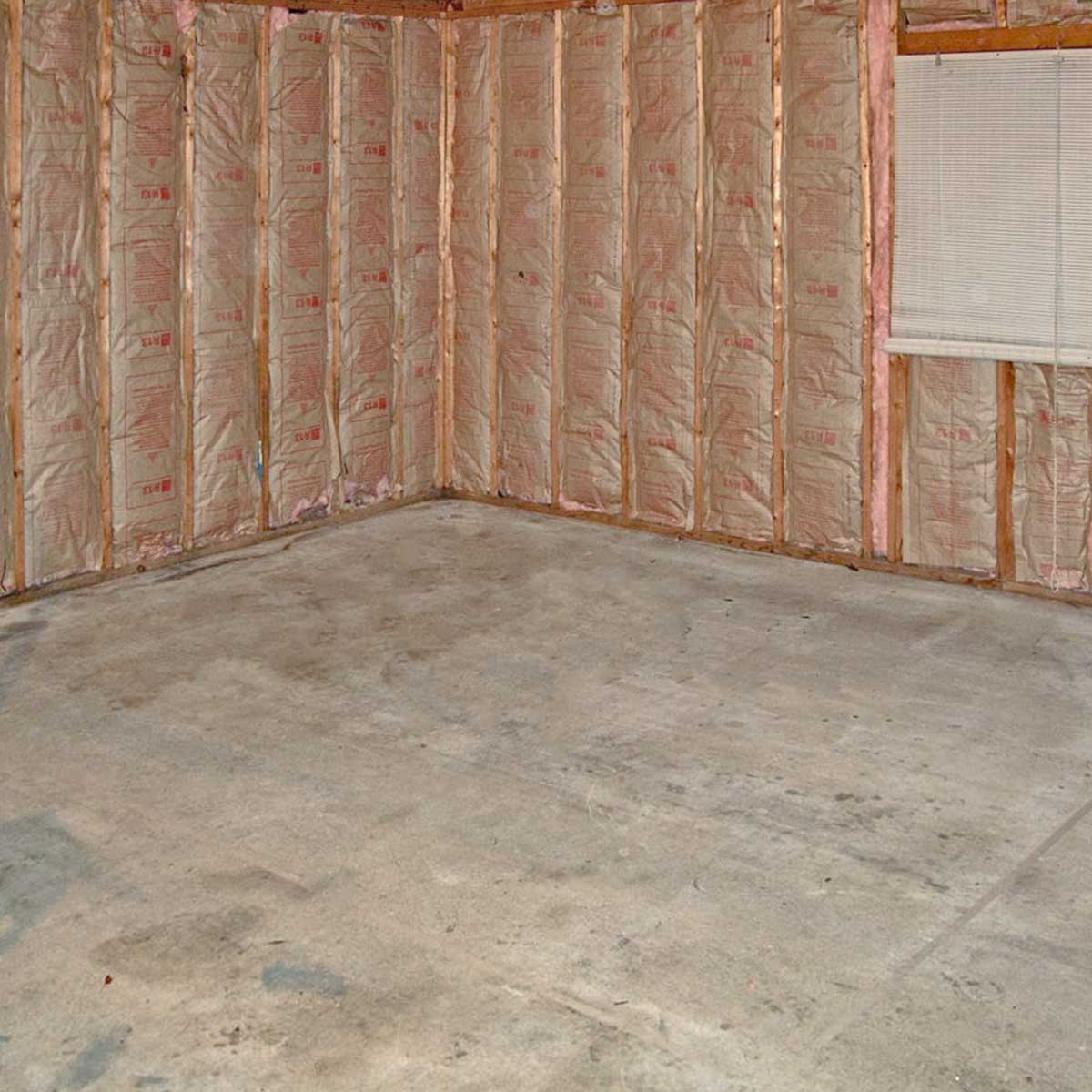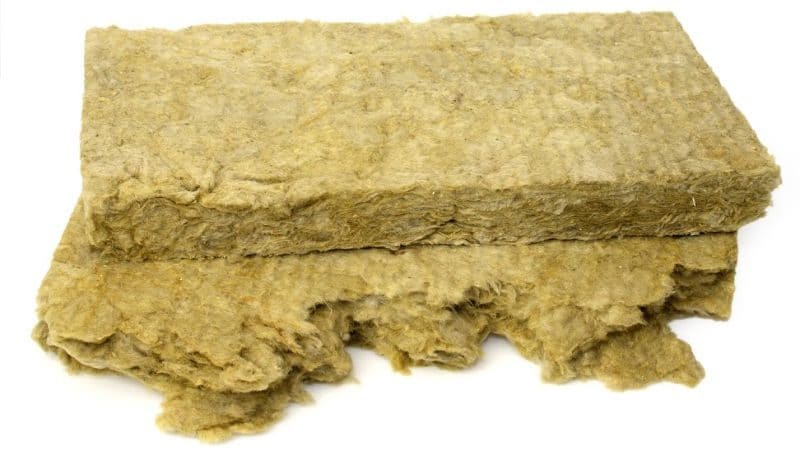All Categories
Featured
Table of Contents
- – How To Soundproof A Room Cheaply And Effectively
- –
- – Best Soundproof Insulation Materials
- – Understanding The Basics Of Sound Transm...
- – STCs to Consider for Your Home
- – Insulation Noise Reduction
- – Types Of Soundproofing
- – Different Types Of Insulation
- – Fiberglass insulation
- – MultiPurpose transmission class (STCs) upto...
- – Batt Insulation
- – Foam Spray Insulation
- – Insulation
- – Roxul Rockwool Acoustical Mineral Wool I...
- – Acoustimac Eco Cellulose Insulation
- – Foam It Green Spray Insulation
- – Mineral Wool vs Fiberglass Insulation Bo...
- – Mineral Wool Panels vs Fiberglass Panels
- – Cellulose or Fiberglass Batts/Panels
- – Cellulose vs Roxul Rockwool
- – Cellulose vs. spray foam
- – Roxul Rockboard panels vs Rigid Foam
- – Uses of soundproofing insulation
- – Move Electrical Boxes
- – Seal The Boxes
- – Insulate Your Walls
- – Doors
- – Absorption
- – Insulation made from mineral wool
- – Cellulose Insulation
- – How To Soundproof A Room In 3 Steps
- – Which Type Of Insulation Is The Best For Sound...
- – The Best Type Of Insulation For Soundproofing:...
- – Insulation For Soundproofing: Which Is The Bes...
- – The #1 Solution For Stopping Unwanted Noise So...
- – 5 Best Types Of Insulation For Soundproofing ...
How To Soundproof A Room Cheaply And Effectively
Soundproofing a ceiling is an excellent way to prevent sound from entering your home. Soundproofing a ceiling is also an easy project, and it's relatively inexpensive. This project can use a variety of soundproofing materials, including foam tiles and acoustic panels. Here are some tips and tricks to ensure that these products are properly installed.
Best Soundproof Insulation Materials
There are many kinds of soundproof insulation that can be used to insulate your house or workplace. All of these materials may not be the same. While some might be better at blocking noise, others may be more expensive.
Noise Pollution is a major problem for many cities all over the world.
This mineral wool fiberglass blown with cellulose spray insulation foamboard is a great solution for your home. It can soundproof and retain heat, as well as protecting walls from moisture damage.
We are exposed to thousands upon thousands of noises every day in our homes. Acoustic insulation materials can help improve our comfort.
Airborne sounds refer to sound waves that travel through air. Flanking noises can travel from walls to ceilings and through floors to under walls. This is difficult to control and takes time.
Understanding The Basics Of Sound Transmission
Sound is an electromagnetic wave of pressure moving through the air. It is a sound that can be heard but not felt. Sound waves travel at different speeds based on their wavelength (the ).
Sound waves travel through air at different wavelengths. But sound waves can still be heard from 17 to 17 meters away. The distance between the speakers is not the only factor that will determine how loud they sound. Their volume will be lower if there is more room and people are present.
Hertz can be used to measure frequency. The Hertz measure frequency.
Sound waves are controlled by materials that absorb them or block their transmission. Fiberglass absorbs sound more efficiently than other materials, due to its density.
A quiet home will average 40dB. A noisy home will have a level of over 100dB. The material will be more effective if the number is higher.
STCs to Consider for Your Home
A quiet home should receive a higher rating than STC40. Ceilings, walls, and floors should be rated at STC50 or higher. STC 52 is the minimum rating required for bedrooms. STC 56 is for bathrooms and living area. STC 60 should refer to kitchens.
Insulation Noise Reduction
Before you start any construction project, soundproofing your house is a must. We have some amazing tips for soundproofing your house if you are new to construction.
There are many options available to ensure high-quality soundproofing. Sound insulation is one of them, but what exactly does it do? It's an important feature in any home or building because it helps keep noise levels down and reduce unwanted vibrations throughout the structure. Low soundproofing can make it difficult to hear the vibrations of running motors, fan blades, and other vibrating appliances like air conditioners or fans.
Sound Dampening
Acoustic insulation is 80. Acoustic insulation is 80.
Insulation increases the value of your house by keeping heat out while keeping cold in. Sound insulation will increase the rating of your walls. The strength of your walls is increased by using metal studs. Drywall can reduce noise from your home.
The steel studs hold up the drywall. Sound insulation is increased by 49% if 5/8" is used in place of 1".
Types Of Soundproofing
However, fiberglass and drywall dominate the soundproofing market. Although drywall is mainly used in older homes it can still be a great choice for homeowners who wish to improve their home's energy efficiency. Fiberglass insulation is becoming more popular due to its ability reduce noise and improve energy efficiency.
Insulation can come in two types: acoustic and mechanical. Mechanical insulation includes foam, metal studs, steel beams and other materials that are placed inside walls or ceilings to absorb sound waves and prevent vibrations from reaching sensitive areas like floors, windowsills, etc. It's easy to add insulation to your home. But which type is best?
Acoustic sound-absorbing material can be used to quieten walls, floors, and ceilings. Because they are porous, light, and trap sound waves,
Sound blockers are often thick, heavy materials that reflect sound waves. They don't emit as much noise.
To minimize noise transfer from different rooms to the outside, isolation walls are used. These clips are used to isolate walls from each other.
Different Types Of Insulation
A strong, porous material that can be used for insulation. Absorbs vibrations and sounds from airborne sources.
Fiberglass is an insulation type used to insulate homes. It is made up of melted plastic which is spun into yarn. It is a porous material that traps heat inside your home in cold weather. It also absorbs sound at the same level as mineral wool. It is extruded into wall cavities with an extrusion device. It is less expensive than other types.
Sound Control Spray Foam insulation is a type if polyurethane spray foam that is sprayed on the wall to insulate a room. It is also known by the name acoustic insulation. It is an extremely effective soundproofing material, which can reduce noise by upto 90%
Extruded plasticstyrene may be used to create both blue and red foam boards. ISO panels are more efficient insulation than either the blue or pink foam board.
The use of a polystyrene panel to reduce noise within a space is called
Fiberglass insulation
Which insulation is best? The answer to that question depends on your budget, your climate and the features you want in your new home. It also depends on which noise-reducing devices are available at the time. As companies try to improve their products, the soundproofing market has become more competitive. Material costs have dropped, meaning that manufacturers can use less material while still producing high-quality products.
Electronic Sound Absorption & Cacellation (ESAC), systems transform electrical energy into acoustic energies that are transmitted through walls or ceilings onto the originating source sound source.
Fiberglass insulation is made from melting plastic and spinning the strands into long strands. Fiberglass insulation insulates homes by retaining heat in winter and allowing cold air to escape.
A thicker batter can reduce the STC by about 1 point. Sound waves reflect back to the source more frequently, which increases overall STC.
Fiberglass insulation offers flexibility. Fiberglass Insulation has a NRC rating at 0.85. R11 insulation is 0.95. R19 insulation is 1.
Fiberglass insulation keeps heat inside your home at a very high level.
Fiberglass batts have the ability to insulate walls, ceilings, roofs, and floors. Rigid batting can be used in walls, floors or ceilings to reduce echos, feedback, noise transmission, echos, etc.
Owens Corning offers a pink unfaced, 23" x 39" insulation roll that can fit between beams or trusses. It adds 6 inches of insulation and has an R19 value. However, it can be mold and moisture-sensitive. If not compressed, it can improve sound absorption on floors and walls.
Owens-Corning 703 is a lightweight acoustic insulate that can be used for ceilings, walls, and hanging frames. To prevent fibers from flying, it should be covered with acoustical fabric.
Owens Corning 2" thick Soundproofing Insulations have a density 10.3 lbs/ft3 with an added STC of 18. It enhances the overall sound.
MultiPurpose transmission class (STCs) upto 53 It has a insulation value of 1. It is better at higher frequency than lower ones. However, low-frequency sounds are still an issue.
Mineral Wool
Mineral wool insulation comes in many varieties.
Mineral wool insulation is stiffer and denser than fiberglas. Mineral wool insulation is more dense and stiffer than fiberglas. It also has less potential to cause noise transfer or slouch. This also stops sound transmission.
Acoustic tile is used to reduce sound and echo.
Batt Insulation
Batt insulation is a type that wraps around a wall. It is typically made from fiberglass, although some varieties use other materials like polyester. Depending on the size of your space, you can find batt insulation in different thicknesses.
Batt insulation comes in a rectangular form so it is easy to install. The base material can also impact the product's ability soundproof, act as a thermal barrier, or soundproofing agent.
Batt insulation is made out of fiber glass. It's strong. With a saw or a serrated blade, you can make holes for electrical boxes. Protective eyewear and a mouth mask are recommended for fiberglass cutting.
Because mineral wool insulation can be installed quickly and is cheap, it is very common. Fiberglass insulation is more costly but lasts longer. Ceramic insulation is both the most expensive and the most effective in keeping heat out. While blanket insulation is less expensive than ceramic insulation, it doesn't last as well. While cotton batts are easy to install and cheap, they are not as efficient at keeping heat out of the environment as mineral wool.
Foam Spray Insulation
Polyurethane foam spray is great for insulation in unusual-shaped areas. However, it's most commonly used to insulate attics which are not completed.
Liquid Foam Insulation can be applied to walls by spraying it on. This insulation is used to insulate buildings.
While liquid insulation doesn't offer fireproofing, they do provide thermal resistance.
Insulation
Blowed insulation looks almost identical when poured. However, it can spill out and will not work in new wall building.
Blown insulation refers to insulation used to insulate homes.
Roxul Rockwool Acoustical Mineral Wool Insulation
Many manufacturers use rockwool to soundproof their products. They can create bass traps and acoustic panels using it.
You can buy six-pound units of rock wool acoustic wool insulation. It's great for acoustic insulation and as an economical, water repelling fire class. It is hydrophobic. Although the panels I have linked are 2 inch thick, they come in 3 inch or 4 inch options. However, you can get battys that are 1 inch thick.
Rockwool, a type of fiberglass insulation, is used in building construction.
Rockwool offers high quality insulation. It can be used to insulate homes and buildings.
Acoustimac Eco Cellulose Insulation
This ecocellulose insulation is a great option.
It is made from recycled materials.
These panels provide protection for your home and office from high frequency sounds like sirens. Unfortunately, they do not protect you against low-frequency sound such as car engines or footsteps.
Insulations' fire rating to is Class B.
Foam It Green Spray Insulation
This foam insulation product is for sealing and insuring small areas. Spray takes less than 5 minutes.
Instantly seals out air and insulates. With orders over $250, you get 17 additional free items Light green foam reduces the amount of waste. Approx. 602 sq.ft. One inch insulation. This is what you will get:
This 15-foot hose comes with an application gun, 10 fan spray tips, and 3 fan spray tip. Light green indicates you did it right.
This foam can also be used as insulation. Use a slower-rising foam instead.
How soundproof insulation is installed.
Mineral Wool vs Fiberglass Insulation Boots
While fiberglass batts may be more expensive than mineral wool batts, they have a higher efficiency. Fiberglass Batts are generally less efficient but are still more effective.
Mineral Wool Panels vs Fiberglass Panels
Panels of minerals wool have an SSTC of 45 to 52 with a NRR between 0.95 - 0.99. Both are suitable for sound absorption and echo.
Cellulose or Fiberglass Batts/Panels
Bats are mammals that fly around looking out for insects.
Cellulose vs Roxul Rockwool
Cellulose, a type of fiber, is made up of long chains containing sugar molecules. Cellulose is found in plants as well as animals. It can be used to cushion or insulate buildings. It is also used in soundproofing. Roxul Rockwoll batts have a thickness of 3.6 inches and an STP rating rating of 45. They also have a NRF rating rating 1.1. This is an excellent material for sound absorption.
Cellulose vs. spray foam
Cellulose comes in a range of STPs from 44 to 68 and an NPR of 0.8 to 0.99.
Roxul Rockboard panels vs Rigid Foam
Rigid foam is used in the manufacture of insulation, soundproofing materials, acoustic panels, and other products. It is created by pouring liquid urethane into molds. Because it has many long chains of molecules, it is rigid. Foam, also known by the name cellular plastic is often light gray or white. It is used for insulation of walls, ceilings and roofs. It absorbs sound.
Roxul Rockboards have a great ability to absorb sound and reverberation.
Uses of soundproofing insulation
Noise distractions can be very distracting.
Mineral wool is great for soundproofing homes because it doesn't absorb heat or cold. Many people believe it will increase their home's value.
Move Electrical Boxes
It's important to mount electrical boxes in a way that can be separated from one wall stud. This allows the flexibility to use the 5/8" and 1/2" resilient drywall later.
Make sure your boxes are easy to reach.
Seal The Boxes
Use Acoustic sealants for electrical boxes. Seal cracks in walls with silicone caulks.
Insulate Your Walls
Fiberglass batts must be placed into cavities. Cavity insulation should also be cut with a utility blade to ensure it fits tightly around pipes and cables. When cutting fiberglass, gloves, masks and eye protection are recommended.
Doors
Doors should have high Sound Transmission Class ratings. You could lose some of its advantages if you spend too many hours insulating walls.
Solid-core wooden doors have a standard threshold of 28. Acoustic timber doors have a threshold between 30- and 50. You should look for a supplier who specializes in commercial construction.
Absorption
Acoustic panels or acoustic boards can be used for sound absorption. To achieve better acoustics, it is important to properly install these panels.
Soundproofing can be an essential component of any building or room. Combining several soundproofing methods can produce better results than one.
Soundproofing is an important aspect of any building. Insulation is used in order to stop noise from entering the home or office. There are many kinds of insulation. Some insulations are better than others.
Insulation made from mineral wool
This is a mineral wool made from either rock fibers or glass fibers. They are resistant to fires and do not absorb moisture.
Cellulose Insulation
It is easy to cut and assemble because of its low density. It is very lightweight and does not add weight to walls. Cellulose insulation has a high R value of approximately 4 per inch (R-4) when installed as batts or panels. It is suitable for use in attics and walls as well as ceilings and walls of homes and buildings.
Cellulose insulation has a high soundproofing property. It doesn't absorb heat, cold or noise and absorbs it well. Cellulose insulation is made from recycled paper products such as newspaper and cardboard boxes. The fibers are twisted into strands, which are then compressed to make pellets. Cellulose fiberglass can then be formed into any shape by this process.
Cellulose insulation refers specifically to plant fibers used as wall cavities. They are better at noise insulation because they trap air and noise.
Namely, you'll wish to note where all of the assorted electrical boxes as well as cables are and just how much area they take up. TpEditor.com. That will certainly enable you to tweak the batt before you place it right into the walls (www.TPEditor - Soundproofing TPEditor.com.com). Step 3: Prepare, Another point before you can take care of insulation make certain you've got all the devices you need: Old clothing.
How To Soundproof A Room In 3 Steps


Protect on your own before you start mounting the insulation. An energy knife for cutting the batt insulation down to dimension and suitable it around electrical boxes (www.TPEditor.com).
Which Type Of Insulation Is The Best For Soundproofing?
Step 4: Cut the Insulation, Since you have your gear, you can manage the insulation - Soundproofing TPEditor.com. Nevertheless, if you aren't planning on installing the insulation as soon as you get it, do not unpack it - TpEditor.com - TPEditor.com. www.TPEditor.com (TpEditor.com). Fiberglass, specifically, may aggravate individuals with breathing problems, as it launches little fragments right into the air when you manage it (Soundproofing TPEditor.com).
The Best Type Of Insulation For Soundproofing: How To Stop Noise From Entering Or Leaving Your Home
As I've discussed, the insulation will possibly be as large as the wall surface studs, so you'll just need to reduce the height you need. You can place the batts in as you reduced them, and also reduced out the pieces for electrical boxes as required. Tip 5: Place In the Setup, I really like doing this component with a number of assistants (Soundproofing TPEditor.com).
Insulation For Soundproofing: Which Is The Best Type For You?

It simply makes the entire process easier. Keep in mind to push the batt with the face aiming toward you. That is, if you bought insulation that has a clear difference in between the front and the rear end - Soundproofing TPEditor.com. Press as well as tug the material to make sure that it fills in the whole area. Lastly, make use of the staple gun to attach the paper cellular lining to the wood stud every 7 inches.
The #1 Solution For Stopping Unwanted Noise Sound Proof Insulation

Action 6: Cover It Up With Drywall, If you've mounted every little thing you wanted inside the walls, you'll possibly intend to cover things up now. Your old drywall might be out of order, so. But which ones do you pick? Well, you could enhance the acoustic properties of the space by utilizing soundproof drywall.
5 Best Types Of Insulation For Soundproofing (2022)
What kind of insulation works best for soundproofing
Fiberglass insulation
What R-value does soundproofing require?
If someone asks which R-value soundproof material is the best, then R-13 to R-19 would be the most suitable. Outside walls are more common with R-13 to R-23.
Does higher R-value mean better soundproofing?
R-values that are higher indicate more efficient insulation. All insulation that you use to conserve energy can help soundproof your walls. But, for noise-dampening effects that are significant, you'll need additional insulation.
How effective are insulations for soundproofing.
Foam insulation can deaden sound by up to 80 percent, but you will still get some sound transmission. RetroFoam of Michigan has been helping homeowners dampen sounds in their homes or pole sheds since 2002. So we know how sound transmission works.
If you're servicing the cooking area, drywall may be a far better fit. Alternatively, if you're constructing your bathroom, drywall would be the way to go. www.TPEditor.com. Added Actions You Can Require To Shield Walls and also Ceilings, On the various other hand, if you determine that insulation and also drywall alone won't reduce it, there are other actions you can take while you have the wall studs revealed.
Table of Contents
- – How To Soundproof A Room Cheaply And Effectively
- –
- – Best Soundproof Insulation Materials
- – Understanding The Basics Of Sound Transm...
- – STCs to Consider for Your Home
- – Insulation Noise Reduction
- – Types Of Soundproofing
- – Different Types Of Insulation
- – Fiberglass insulation
- – MultiPurpose transmission class (STCs) upto...
- – Batt Insulation
- – Foam Spray Insulation
- – Insulation
- – Roxul Rockwool Acoustical Mineral Wool I...
- – Acoustimac Eco Cellulose Insulation
- – Foam It Green Spray Insulation
- – Mineral Wool vs Fiberglass Insulation Bo...
- – Mineral Wool Panels vs Fiberglass Panels
- – Cellulose or Fiberglass Batts/Panels
- – Cellulose vs Roxul Rockwool
- – Cellulose vs. spray foam
- – Roxul Rockboard panels vs Rigid Foam
- – Uses of soundproofing insulation
- – Move Electrical Boxes
- – Seal The Boxes
- – Insulate Your Walls
- – Doors
- – Absorption
- – Insulation made from mineral wool
- – Cellulose Insulation
- – How To Soundproof A Room In 3 Steps
- – Which Type Of Insulation Is The Best For Sound...
- – The Best Type Of Insulation For Soundproofing:...
- – Insulation For Soundproofing: Which Is The Bes...
- – The #1 Solution For Stopping Unwanted Noise So...
- – 5 Best Types Of Insulation For Soundproofing ...
Latest Posts
Which Is The Best Insulation For Soundproofing? A Comprehensive Guide
In 19406, Dominick Osborn and Jared Mooney Learned About Things To Do In Frederick County Md
In Central Islip, NY, Yasmin Townsend and Ella Knapp Learned About Frederick County Events
More
Latest Posts
Which Is The Best Insulation For Soundproofing? A Comprehensive Guide
In 19406, Dominick Osborn and Jared Mooney Learned About Things To Do In Frederick County Md
In Central Islip, NY, Yasmin Townsend and Ella Knapp Learned About Frederick County Events